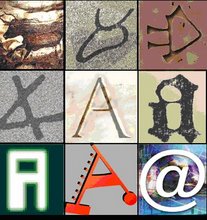Call for Papers on Immersive Virtual, Mixed,
or Augmented Reality Art
> a Special Issue of the
International Journal of Arts and Technology’
>
> http://www.inderscience.com/browse/callpaper.php?callID=914
>
> Important Dates
> Submission intent
(title and 300-word abstract): 1 September, 2008
> Deadline for full paper submission: 31 October, 2008
> Review results returned to authors: February 29, 2009
> Deadline for camera-ready papers: June 30, 2009
>
> Guest Editors:
> Maria Roussou, makebelieve design & consulting, Greece
> Maurice Benayoun, Université Paris 1 Pantheon-Sorbonne, France
>
> For the past fifteen years, virtual reality (VR)
and, more recently, mixed reality (MR)
and augmented reality (AR) environments that
> immerse their participants in imaginary space,
have emerged to define an area that blurs
the lines between the seemingly different
> worlds of research, creativity, and
technological practice, while exploring
the interdependencies between the virtual and the
> physical. From the immersive, yet more esoteric,
CAVE-based projects of the mid-nineties
to the contemporary open experiences
> spread out in virtual as well
as physical space, creative VR/MR/AR
> applications are challenging the ways
we perceive both digital art
> and the science and engineering
behind them.
>
> Early enthusiasm with the use
of projection-based display structures
> and the development of authoring solutions
for application-building
> has brought a level of maturity,
characterized by the emergence of
> new technical and conceptual forms.
It is this particular moment in
> the evolution of immersive VR/MR/AR
art practice that this special
> issue seeks to capture. Hence,
in this special issue, we aim to
> bring forth the topic of
immersive art in its current maturity,
> present the newest developments
and explore its evolving forms,
> aspiring to shape a framework
that will help us to develop the next
> generation of environments.
>
> Therefore, this special issue will not
include contributions that
> deal solely with describing
a narrow and specific piece of art or
> research without reference
to a conceptual framework or a critical
> analysis; rather we encourage contributions
that take a broad and
> integrative view of relevant topics,
encompassing both theoretical
> and empirical perspectives of
digitally-generated creative spaces.
>
>
> Submissions are invited that
touch on but are not limited to the
> following themes:
> Theoretical discourse on immersive virtual,
mixed or augmented
> reality art environments.
> Novel design concepts, applications,
implementations and experiences
> from the actual deployment of immersive
VR/MR/AR art applications
> Research or empirical work addressing
some of the open questions in
> the design of immersive art environments.
For example:
> Issues concerning creativity and aesthetics,
visual depiction, storytelling and narrative,
triggering other senses, embodiment, etc.
> The fine line between designing for entertainment
or for artistic /pleasure
> Issues in the design of interactivity,
interfaces, and interaction
> methodologies, such as navigation
by and tracking of multiple users,
> meaningful group interaction,
the integration of multi-modal
> interfaces (e.g. tactile and
haptic displays, sensing technologies), etc.
> Issues concerning the design
and development process of immersive
> artwork, such as the conceptualisation
and collaboration challenges
> presented by multitalented
interdisciplinary teams working together,
> the unavailability of resources and
work environments, etc.
> Issues in the deployment of different
display configurations, sizes,
> and installations, as well as challenges
in the practical use with
> diverse audiences (e.g., the need
to guide people in experiencing
> the artwork)
> Contributions are encouraged
from different disciplinary
> perspectives, including fine arts,
computer science, performance
> art, theatre, design, architecture,
communications and social sciences,
philosophy, cognitive psychology,
and enabling technologies.
>
> Contributions should take a broad
and integrative view of relevant
> topics, rather than merely describing
a narrow and specific piece of
> art or research.
>
>
> See http://www.inderscience.com/browse/callpaper.php?callID=914 for
> more information.
sexta-feira, 29 de fevereiro de 2008
CFP International Journal of Arts and Technology
Assinar:
Postar comentários (Atom)


Nenhum comentário:
Postar um comentário